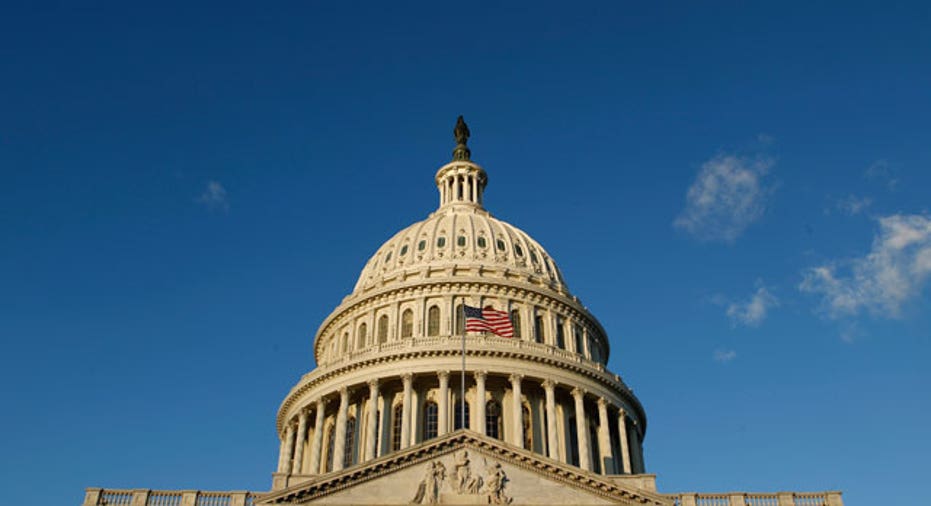Why You Should Care About the Volcker Rule

"Kiss the dice, baby. Gimme a little luck," the banker whispers as he puts his money -- your money -- on the table. When the numbers come up, the chips go into his pile. When they don't ... well, some gamblers are just too big to fail.
This week, the government took a big first step toward shutting down the Can't Lose Room in the Wall Street Casino. The Volcker Rule, a proposal to limit the kinds of risky investments that banks can make, went before four government agencies. On Tuesday, the FDIC unanimously approved the rule, the Federal Reserve backed it, and on Wednesday, the Securities and Exchange Commission followed suit. The final version of the rule is now up for public comment for 60 days.
Click here to read the story on Daily Finance
It's too soon to know exactly how the rule will shake out and how consumers will ultimately be affected. The hope is that it will mean taxpayers won't be on the hook again to bailout banks who gamble with their retail customers' cash.
Gamblers in Pinstripe Suits
Using bank deposits to make risky investments, a process known as "proprietary trading," isn't new -- but for decades it was illegal. The Glass-Steagall Act, a law forcing banks to close their investment/brokerage wings, was passed in 1933, in the middle of the Great Depression. By driving a wedge between boring banking and dangerous, sexy investing, the law sought to stabilize the banking system, and reduce the rampant conflicts of interest that plagued it.
But after years of steadily chipping away at Glass-Steagall, a GOP-led Congress repealed the law in 1999. Banks once again began investing their customers' federally-insured deposits, and kept the winnings for themselves. One of the most disastrous bets was shaky mortgage-backed securities.
For the bankers, proprietary trading was a win-win situation: They were gambling with money that was insured by the FDIC, so if they lost too much, they could count on the government to make their depositors whole. And, since the banks themselves were necessary for American businesses, the government couldn't afford to let them fail. In other words, the roulette wheel was fully insured.
As the money train picked up steam, it also trickled down, in the form of ever-more-exotic subprime mortgages and ever-easier credit. This, in turn, pumped up the housing industry, which exploded with a steroidal burst of energy, pouring out houses for newly-approved homeowners eager to buy their little bit of the American dream. These new home buyers signed ever-shakier mortgages that got mixed into ever-riskier securities, that the banks then invested in. As the cycle gained steam, banks recorded record profits ... until the whole process came crashing down.
What Kind of Regulation?
There's not really any question that America's big banks need to be regulated. The question is whether or not Glass-Steagall needs to come back. Treasury Secretary Tim Geithner didn't think so: After the recession, he proposed a compromise that would allow banks to keep their investment wings, but would also regulate them far more closely.
On the other side, Paul Volcker, a former Federal Reserve chairman, and former chair of President Obama's Economic Recovery Advisory Board, offered a more sweeping proposal: Arguing that "banks are there to serve the public," he claimed that their investments "create conflicts of interest." To clear up the problem, he proposed that they be barred from proprietary trading. In other words, banks could buy stocks and securities for their customers, but could not do so for themselves.
Meanwhile, investment houses -- which, under the Volcker rule, would be separated from banks -- could borrow buy and sell securities, but couldn't use money that was insured by the FDIC. If their investments went south, such institutions might fail, but would not be able to drag the whole American economy down with them.
Threading the Needle
On paper, the Volcker Rule is very simple: Traditional banking sits on one side of the line, investment sits on the other. But in the current version that was approved by the FDIC, the line has been blurred by several exceptions -- and exceptions to the exceptions -- that make it hard to determine where commercial banking ends and proprietary trading begins. Americans for Financial Reform, a coalition group working to enact Wall Street reform, argue that the rule, as written, "leaves enormous scope for discretion by both banks and regulators." The rule's vagueness and exceptions, they warn, "raise serious doubts about whether this framework will actually produce the significant changes in bank practices that we need."
Economist Nouriel Roubini, who gained fame for predicting both the explosion of the housing bubble and the 2008 recession, was even more outspoken. Referring to the Volcker Rule as "Glass-Steagall Lite," the man called "Dr. Doom" argued that a much sharper line needs to be drawn between commercial banks and other financial services: "We need to go all the way and implement the kind of restrictions between commercial banking and investment banking that existed under Glass-Steagall."
It is not clear what effect the new rules will have on bank customers. Recently, The Wall Street Journal suggested that the Volcker rule could lead to higher fees for corporate customers, as banks would need to spend more money on self-regulation. Also, as Bank of America's (NYSE:BAC) recent new debit card fee indicates, when banks are forced to close one revenue stream, they often try to create another. Still, given the high price of the 2008 bank bailout and the subsequent recession, a few new bank fees may end up being a bargain.
Bruce Watson is a senior features writer for DailyFinance. You can reach him by e-mail at bruce.watson@teamaol.com, or follow him on Twitter at @bruce1971.
More From AOL Daily Finance:
Should You Buy Shares in Your Favorite Sports Team?
What to Do When Mom and Dad Need Money Help
Video: Tips on Boosting Your Credit Limit